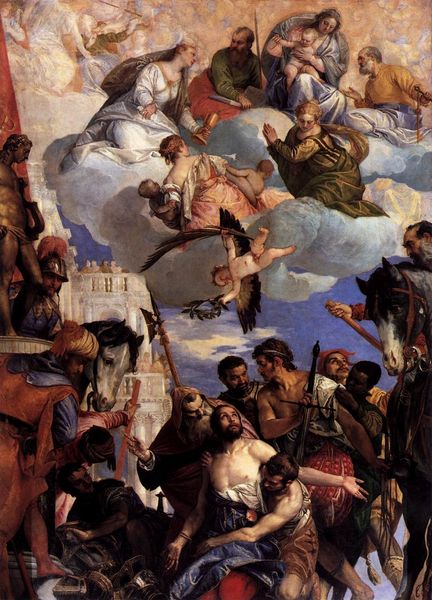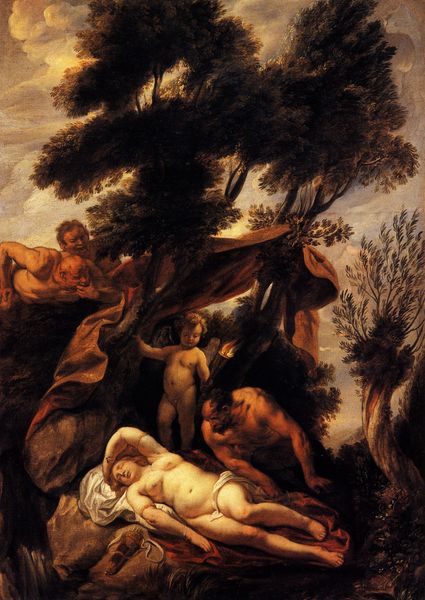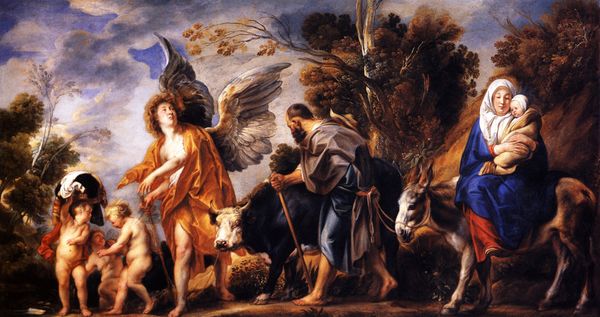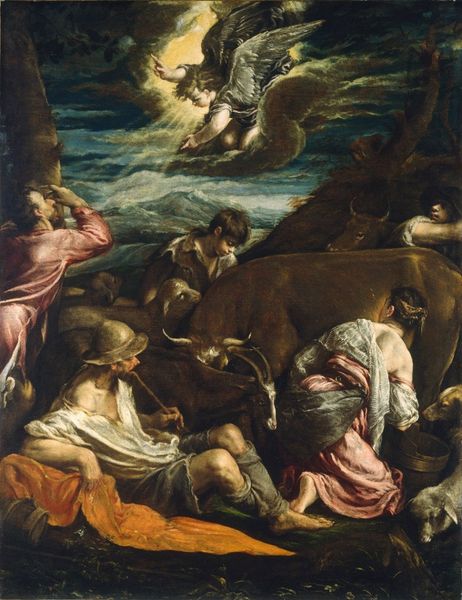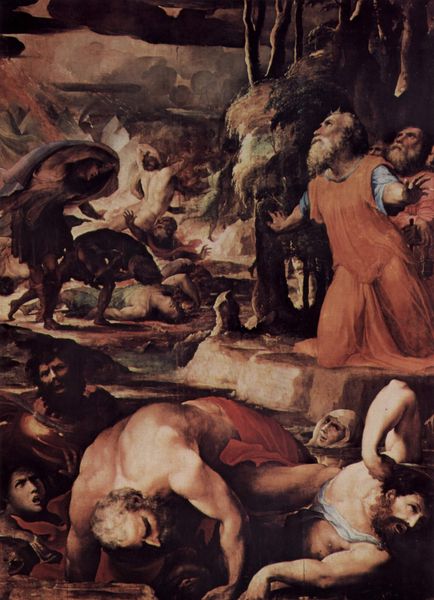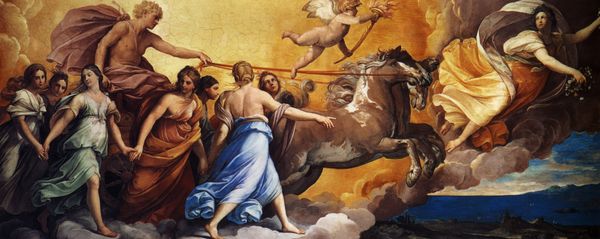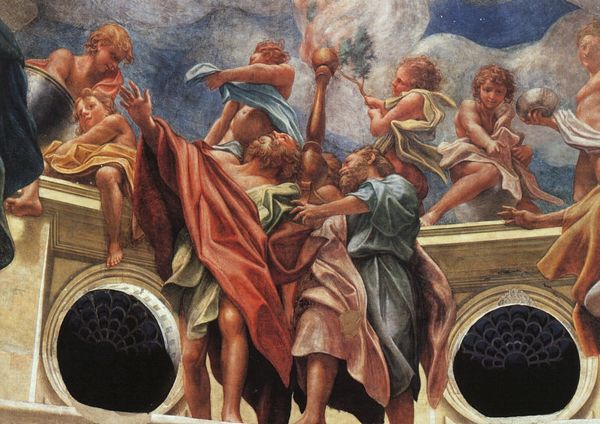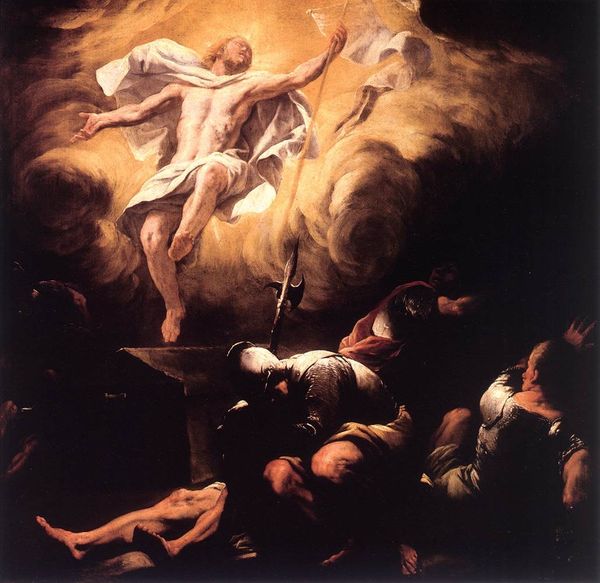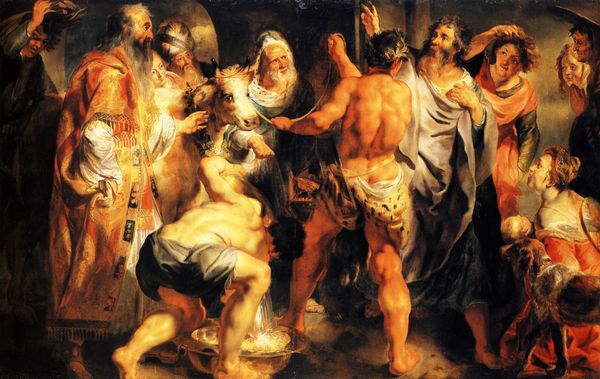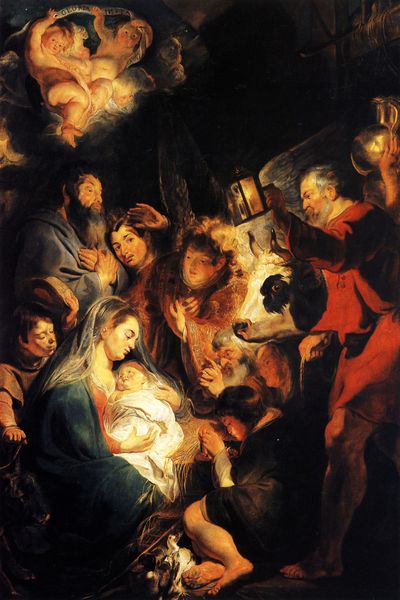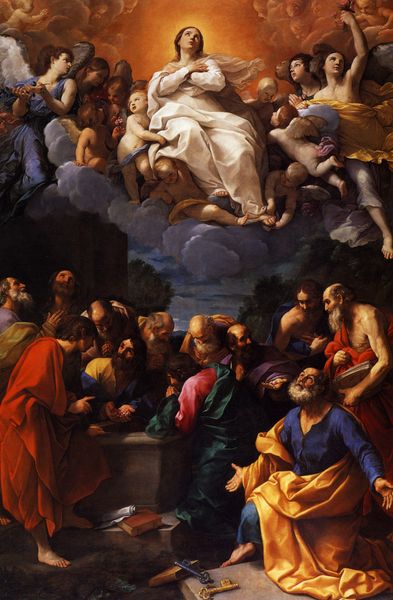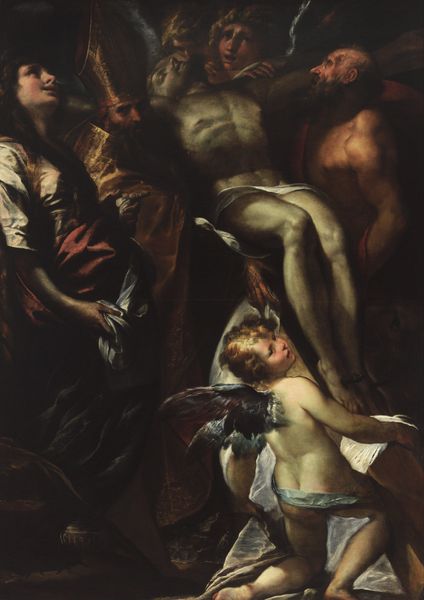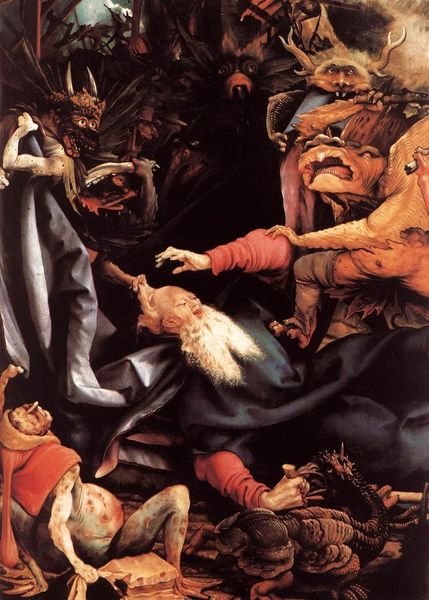
painting, oil-paint
#
narrative-art
#
baroque
#
painting
#
oil-paint
#
figuration
#
oil painting
#
christianity
#
history-painting
#
christ
Dimensions: 409 x 225 cm
Copyright: Public domain
Editor: We're looking at Jacob Jordaens' "The Martyrdom of St. Apollonia" from 1628, an oil painting brimming with movement and drama. The central figure is obviously suffering, but surrounded by so many other figures, it’s hard to pinpoint the narrative. What exactly is going on here? Curator: This baroque painting stages the torture of St. Apollonia, whose teeth were violently extracted before her execution. Think about the social context of religious persecution at this time, and how visual depictions were a powerful tool of both faith and propaganda. How do you feel the composition adds to the emotional impact? Editor: The dramatic lighting definitely amplifies the sense of chaos and brutality. And the contrast between Apollonia’s pale skin and the dark, saturated colors elsewhere... it's unsettling. Does the painting have anything to say about the power dynamics at play? Curator: Absolutely. The figures looming over Apollonia embody patriarchal authority and state power crushing dissent. Consider also Jordaens’s own religious background; he converted to Protestantism later in life. How might that biographical detail shift our understanding of his intentions here? Editor: It makes you wonder if the painting is also a subtle commentary on religious intolerance. If the artist had conflicting opinions. But with all the cherubs, is Jordaens glorifying the violence, too? Curator: Baroque art often used dramatic scenes to evoke strong emotional responses. It invited viewers to contemplate questions of faith, power, and the human condition. But it’s key to investigate if that glory actually supports the torture. Instead of feeling sublime, are we as viewers disgusted and outraged by injustice? Editor: That’s a powerful point – shifting the focus to *our* contemporary reaction as viewers. Thinking about the painting this way definitely complicates my initial assumptions. Curator: It highlights how art can function as both a historical document and a mirror reflecting our present-day concerns with issues of social justice. Thank you for prompting that deep consideration of an image. Editor: This was amazing. Now, whenever I encounter religious baroque painting, I’ll question more how gender and identity were being explored through art.
Comments
No comments
Be the first to comment and join the conversation on the ultimate creative platform.
